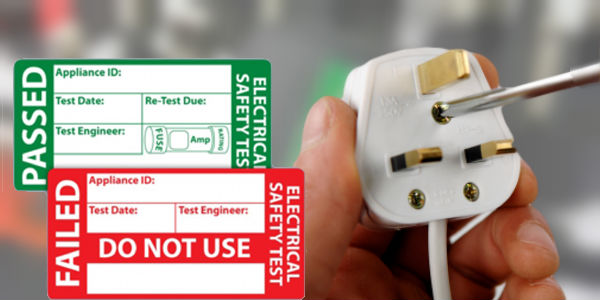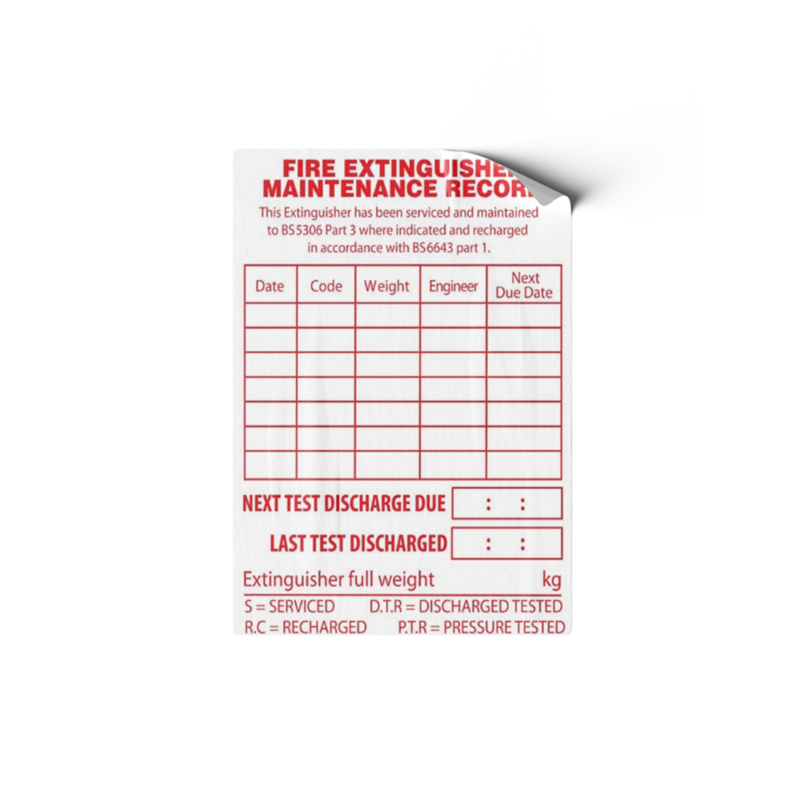20 BEST FACTS FOR CANNOCK PAT TESTING AND FIRE EXTINGUISHER SERVICING
Ten Tips For The Emergency Assistance Of PAT in Cannock
Emergency assistance is offered for Portable Appliance Testing in situations that are of vital importance, where electrical equipment safety issues pose immediate dangers that cannot be delayed until regular maintenance cycles. Contrary to the risk-based, planned approach of regular PAT testing, emergency services respond to immediate events such as electrical shocks, appliance fires, near-miss incidents as well as urgent health or insurance safety audit demands. Electricity at Work Regulations and Health and Safety at Work Acts of 1974 oblige duty holders to take immediate action to minimize serious and impending danger. Emergency PAT support is, therefore, an essential component of risk management. The quality of this emergency response–measured by availability, technician competence, and action effectiveness–directly impacts workplace safety, regulatory compliance, and potential liability. Assessing the capabilities of a service provider in emergency situations requires a careful examination of their emergency response procedures as well as their technical resources and the track record they have in dealing with dangerous electrical situations that are high pressure.
1. Access to 24/7/365, and specific emergency contact protocols in Cannock
Genuine emergency support requires uninterrupted access to dedicated contact channels that are separate from normal business lines. This typically involves a monitored emergency hotline that routes directly to an on-call coordinator who can mobilize personnel at any time even on weekends, nights and bank holiday weekends. Call handling processes must be clearly defined, with limits for callbacks (e.g. 30 30, 30 minutes), and escalation protocols. In the absence of a designated emergency number or proof of calls that go to voicemail during non-business hours creates a huge security gap for customers facing imminent electrical hazards.
2. Garanties on Emergency Response Times in Cannock
The providers should provide a range of response times based on the severity of risk. Priority 1 Irregular Danger: On-site attendance within 2 to 4 hours of an incident that involve electric shock, fire or smoke. Priority 2: (Urgent fault) Attendance within 24 hrs for critical flaws that are discovered during audits and operational failures within safety-critical equipment. These assurances should be provided explicitly in the service level agreement with clear consequences for missing targets. For example the service credit or penalties clauses.
3. Technical Competencies for Emergency Responders
Emergency technicians must be more qualified and experienced than regular testers. They should be certified (City & Guilds 2357) with additional training and certifications in fault diagnosis (GS38), forensic investigation (GS38) as well as safe isolation (GS38) and forensic investigation (City & Guilds 2357). They should ideally possess electrical engineering degrees in order to be able to identify more complicated faults than the standard testing protocols. Providers should be able to demonstrate that their emergency team has the necessary credentials and is regularly involved in exercises that simulate scenarios.
4. Scope of Emergency Services: Investigation, Isolation and Certification in Cannock
Emergency support for all types of emergencies is split into three parts. Immediate Investigation – to determine the root of the problem – Safe Isolation – which includes instructions on how to isolate affected areas, and finally, formal Certification providing documentation for compliance and insurance reasons. The service should include producing an emergency report detailing the event, its findings and suggested corrective steps, which becomes crucial evidence for HSE inquiries or insurance claims.
5. Emergencies: Access to Equipment and Resources in Cannock
Emergency response vehicles must serve as mobile workshops, equipped with: calibrated testing equipment, comprehensive spares (plugs (fuses) cables) as well as replacement appliances (for critical equipment), hazardous situations isolation (lock out tag-out kit) and personal protective equipment (PPE). This allows technicians to resolve most issues on the spot, instead of merely identifying them and requiring further appointments.
6. Integration with Incident Reporting and RIDDOR -related considerations in Cannock
Professional emergency personnel are aware of their reporting requirements in line with the Reporting of Injuries, Diseases and Dangerous Occurrences (RIDDOR) Regulations. They are able to assist clients in determining which incidents are dangerous enough to report (e.g. the short circuit that causes a fire, explosion or fire) and should be able to provide the required evidence of technical nature. This advisory position is crucial to emergency support. It aids duty-holders to fulfill their legal obligations after major incidents involving electrical safety.
7. Post-Emergency System Review with Preventative Recommendations in Cannock
Following the conclusion of the emergency situation, providers should conduct formal reviews in order determine the source of their weaknesses. This includes analysing whether existing tests and risk assessments remain appropriate, recommending changes to maintenance schedules and identifying common PATterns across equipment types or Cannocks. This proactive approach transforms an emergency response from a reactive one into an opportunity to improve the strategic direction. It can make sure that the situation doesn't repeat itself and also strengthen the safety system in general.
8. Communication Protocols in times of emergency in Cannock
Protocols for communication that are clear and concise are essential in high-pressure situations. The providers should ensure that the initial call is acknowledged within 15 minutes and a technician dispatch notice and ETA are sent to the facility when the confirmation of arriving on site is provided, and initial findings are made public within an hour following the completion of the investigation. After the resolution of the issue, an emergency report that outlines the findings must be made available within 24 hours. A follow-up meeting to discuss preventive measures as well as review the findings can also be scheduled.
9. Transparency regarding the cost of emergency call-outs in Cannock
The price for emergency services must be explicit detailed in advance to avoid disputes in times of crisis. Contracts must clearly define the fees for emergency call-outs (typically PS150 – PS300), hourly rates (often 1.5-2x the standard rate) as well as pricing for parts and any premiums applicable to an out of hours response. Transparent pricing avoids financial surprises during emergency situations and allows the duty holder to make informed decisions in approving urgent repairs.
10. Documentation and Evidence Preservation in legal proceedings in Cannock
Emergency responses often involve situations with potential legal implications. Technicians must be taught to protect evidence. This involves taking photographs of malfunctioning conditions and storing them securely. The final report must be forensically accurate, clearly detailing both the equipment's prior intervention condition and the actions taken. This documentation may be necessary for insurance disputes as well HSE investigation or possibly legal proceedings. Read the recommended Cannock fixed electrical testing for more advice.

Fire Extinguisher Servicing Tips: 10 Top Tips in Cannock
It is more complicated than just finding someone who can perform an annual check-up when you choose a UK fire extinguisher provider. Comprehensive companies act as a single-point of contact for managing your entire inventory of fire protection equipment. They provide a comprehensive range services that reduce administrative burdens and provide an all-encompassing solution. The range of services offered is a direct indicator of a company's expertise, resources, and commitment to being a long-term partner rather than just a contractor. You can make informed choices by knowing the various services that are available. This includes initial risk assessments and installations, regular maintenance and support for emergencies, as well as end-of-life disposal.
1. Routine Maintenance & Scheduled Servicing – This is at the basis of our service and strictly governed by BS 536-3. Full-service providers will control all scheduled intervals. Checks of the visuals every month (often conducted by you with their assistance) as well as the obligatory annual basic service for all extinguishers. The extended service (discharge test) for foam, water models, and powder every 5 years, and the pressure test and overhaul for CO2 extinguishers every 10 years. They should schedule these visits proactively, and provide full accreditation.
2. Quality providers don't only maintain, they also advise and provide the right equipment. This service includes a site survey in order to determine the size, type, and number of fire extinguishers is required, based on your assessment of the fire risks and the hazards specific to the site (e.g. electrical Class A or B). They'll then supply the BSI kitemarked or similar approved equipment, then install it according to BS 5306-8 and make sure that the signage is correct and at the right mounting heights.
3. Fire Risk Assessment (FRA). Most leading servicing firms have certified assessors who complete or review any legally mandated Fire Risk Assessment. This should be a separate procedure. But having the extinguisher provider contribute to the FRA or complete it guarantees that your equipment is in line with the identified risks. This provides an audit trail that runs seamlessly from the identification of hazards until the implementation of controls.
4. Emergency Callouts and Reactive Services: Equipment is susceptible to being stolen, damaged or discharged accidentally released at any given moment. A trustworthy business provides an emergency call-out service that allows you to replace equipment or recommission it quickly. In this way, your premises won't be unprotected and non-compliant any longer than is necessary. This includes the replacement of damaged or missing equipment.
5. Other Fire Equipment Servicing – Your fire safety program does not have to be only limited to the use of portable extinguishers. Full-service providers are equipped to maintain the other equipment you have and also certify it, creating one contract. This includes fire blankets, hose reels, fire alarm systems, emergency lighting, as well as dry and wet risers. This consolidating approach simplifies documentation and lowers costs.
6. Training and Education Services. Equipment is only as effective as users who know how it works. Many providers offer other training options. These include extinguisher-training courses (often with live-fire simulations), as well as classes for fire wardens and fire safety awareness. This empowers your staff to be safer overall and further demonstrates your commitment to adherence.
7. Online portals and comprehensive documentation are mandated by law. Leading companies offer high-quality documentation, not just paper certificates. This includes detailed digital service reports, asset registers, and access to customer portals on the internet where you can access the entire history of your service download certificates, document the faults and schedule appointments 24/7, dramatically simplifying compliance management.
8. Disposal Services and Environmental Services. Under Duty of Care regulations, the responsible disposal of fire extinguishers that have been retired is an environmental and legal duty. A full-service company will manage this efficiently, using licensed waste carriers, and provide Waste Transfer Notes as proof of the correct and legal disposal. You'll avoid having to pay huge fines caused by improper disposal of dangerous materials and containers that are pressurised.
9. Planned Preventative Management (PPM) as well as Asset Management. The best providers go far beyond reactive calls to provide proactive contracts for PPM. They handle all your assets by tracking the due dates and scheduling maintenance appointments. This takes away the administrative burden, and ensures there is no missed service.
10. Consultancy Services and Auditing Compliance Experts provide consultation to larger or more complicated sites. This might include conducting an analysis of your current fire safety measures in relation to the law, giving recommendations on remediation strategies and continuing compliance audits. Have a look at the top fire safety in Cannock for more examples.

